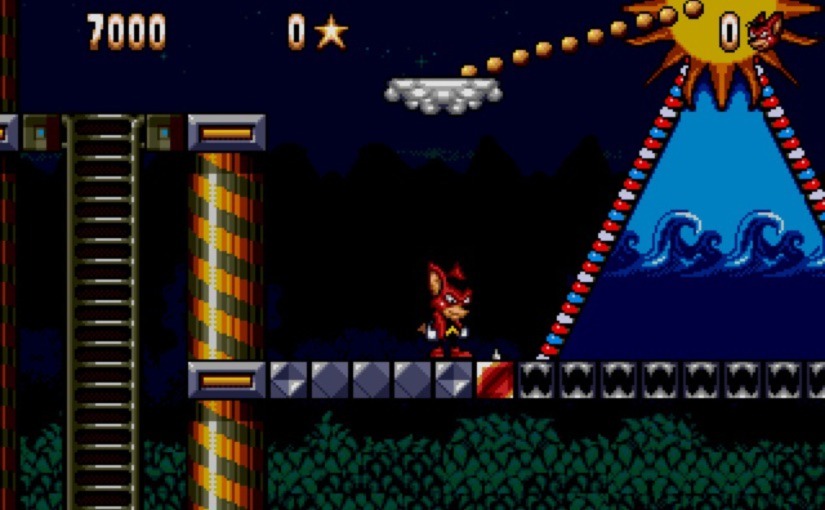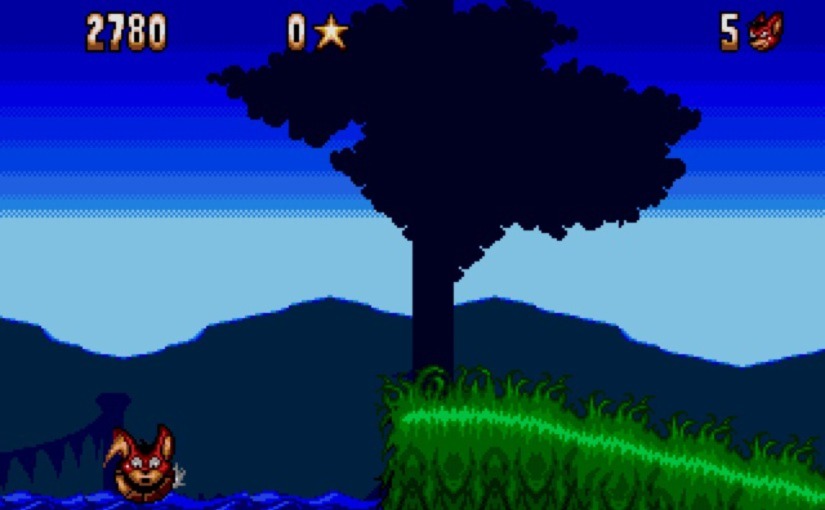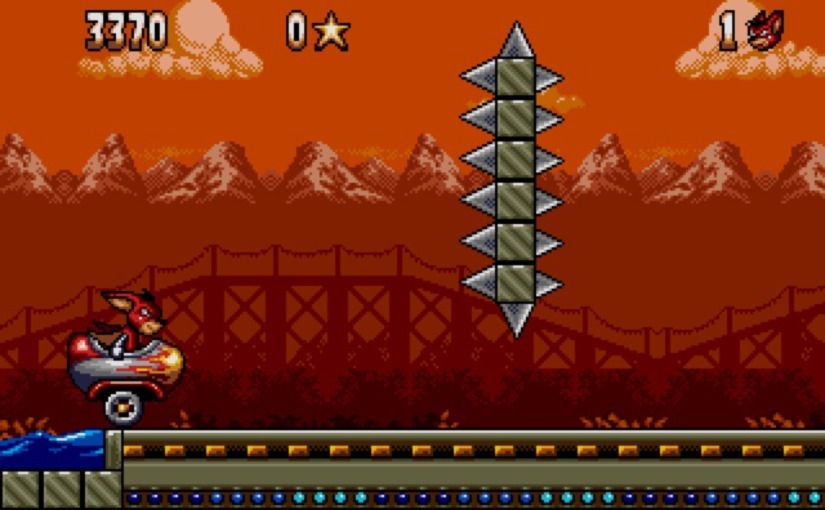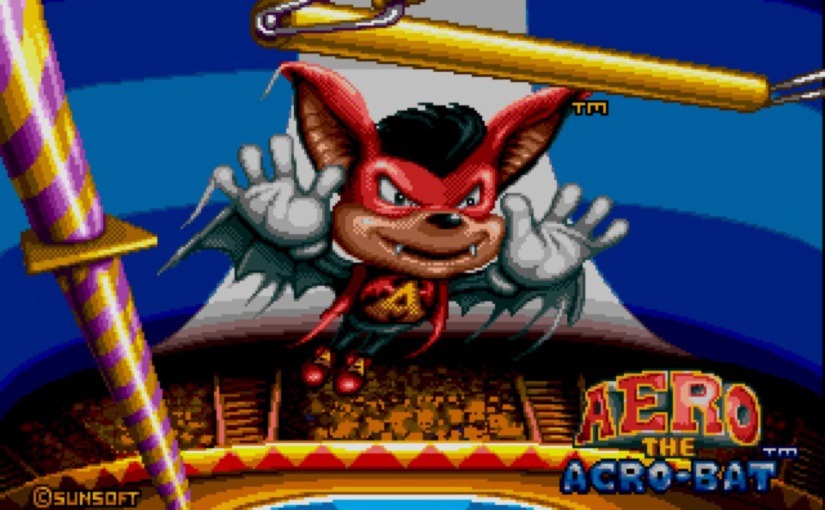Bother in the Big Top
This review was written for Issue 8 of the sadly now defunct Sega Mania Magazine, as such it is written from a ’90s perspective.
Does anyone actually like the circus? I mean, I’m sure they were great in the olden times, when the only other forms of entertainment were gathering around the wireless or playing with a hoop and a stick, but do we really need them here in the futuristic ’90s? We have television, spectator sports and video games, bars and nightclubs, Pogs and Slinkies. I for one think that it’s time for circuses to go. The animals don’t want to be there, I question the motives and mental capacity of anyone who chooses to be a clown, and acrobats can use their impressive suppleness and contortionist abilities elsewhere. Maybe they can perform elaborate robberies or something.
Aero the Acro-bat for the Mega Drive has an unavoidable big top vibe, with the titular Aero being the game’s protagonist and the star of the in-game show. A villainous industrialist named Edgar Ektor has sabotaged the World of Amusement Circus and Funpark, and has kidnapped all of its performers, replacing them with nefarious, evil clowns and other such appropriately-themed bad guys. It’s fallen upon Aero to use his high-flying skills and acrobatic feats to save the day, rescue his girlfriend Aeriel, and put a stop to Ektor’s machinations. This includes taking care of Ektor’s lead henchman, a certain Zero the Kamikaze Squirrel.

If you’ve seen Aero the Acro-bat before, you’ll know that he represents yet another developer having a dip into the “critters with ‘tude” well. This time it’s Sunsoft who have their straws out, attempting to slurp up some of Sonic’s lucrative success water. Have they backed a winner with this Chiropteran tumbler? I’m not so sure. The designers doubled down on the mean and cool attitude and forgot to add any charm or charisma. Also, he’s a circus performer, which means I immediately question his moral and social ideals.
Initial impressions paint Aero the Acro-bat as a fairly standard platformer, and it feels a little dated compared to some of the platformers that have appeared in recent years. Aero himself is somewhat stiff to control, and he commits that platformer hero sin of not being able to stop quickly, which can result in some aggravating slides into certain doom. The stages, while colourful, seem fairly lifeless, with levels that don’t evolve as you progress and forgettable enemy designs. There is some stage variety later on, with a few cool gimmicks that are mostly based on fairground rides, but nothing really stands out or sticks with you. Visually, this is closer to James Pond or Krusty’s Super Fun House than it is to Ristar or our iconic hedgehog pal.

Mechanically, the level design philosophy seems frustratingly centred on catching the player out with traps that they could not have foreseen. The admittedly-large levels are littered with spikes, and said spikes are small and inconspicuous, and are often found in the most annoying of places. For example, some of the levels ask you to jump on certain platforms, which causes them to disintegrate, and you can be darned sure there are going to be spike pits underneath all of them. There’s a particular spiked pit during act two that you get dumped into immediately after a unicycle tightrope ride, the likes of which have thus far given you no reason to think they’re going to end in certain, spiky doom. This would all be fine if the spikes just made you lose some health, but these barbed bad boys are insta-death, baby.
If you’re a glutton for punishment, have oodles of time to spare, and enjoy memorising massive levels using a process of trial and error that involves lots and lots of dead bat, then you might get a lot of enjoyment out of Aero the Acro-bat, as there is satisfying gameplay to be found once you’ve mastered Aero’s initially-awkward dive attacks and formed your mental map of the levels. It’s a heck of a slog to get there though, and with its forgettable mascot, uninspiring visuals, small sprites and irritating, circus-themed music, you might not want to go through the trouble.

I can’t help but feel that the game doesn’t want you to have fun. Did you know that bats are the only mammal capable of true, full flight, and are even more nimble and agile when airborne than most birds? Not this one. He can hover for a bit, and can only fly temporarily after collecting a certain power-up. He’s also able to fire star projectiles, but they’re extremely limited, he starts with none, and the pick-ups are located in fiddly places to get to. Enemies are positioned specifically to catch you out, which you could say about your average Sonic the Hedgehog level, but Sonic’s zones are mostly focussed on fun, spectacle, exploration and a satisfying challenge, rather than just aggravating schmuck bait.
The Mega Drive is absolutely stuffed with top quality mascot platformers, and Aero, despite all of his impressive acro-bat-ics, struggles to even trouble the top 20. Perhaps he should go back to shooting soundwaves at unsuspecting moths or sucking blood out of horses. You know, all that bat stuff that real bats do.
I hope this was an enjoyable little extra for any Sega Mania fans out there. I wrote one more review for Issue 8 which I will be posting at a later date, and I may also be uploading some of my favourite reviews from throughout the mag’s seven issue run, so stay tuned!

